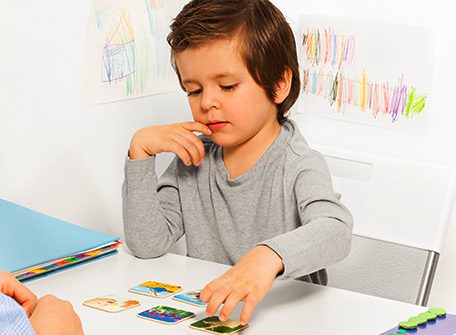Applied behavior analysis (ABA) is a type of therapy used to treat communication, motor skill, and behavioral issues.
Applied Behavior Analysis is a research-based treatment approach that focuses on reducing or eliminating challenging behavior while also improving language, social, self-help, and academic skills. Applied behavior analysis entails using learning principles to effect long-term positive changes in your child’s life. ABA therapy is best known for its application to children and adults with an autism spectrum disorder.
How Is The ABA Therapy Program Planned?
The program is designed and overseen by a licensed behavioral psychologist. The ABA program is tailored to the child’s abilities, requirements, interests, preferences, and family circumstances. In order to establish particular therapy goals, the ABA program begins with a complete assessment of the child’s existing skills and preferences. The age and skill level of the child with autism is taken into account while setting treatment goals.
What Are The Goals Of ABA Therapy?
Different skill areas can be included in goals, such as:
- Language and communication
- Social abilities
- Self-care practices
- Having fun and relaxing
- Abilities to move
- Academic and learning abilities
Each of these skills is broken down into short, clear steps in the lesson plan. The therapist teaches each step one at a time, starting with the simplest and progressing to the more difficult. Data is collected during each therapy session to track progress. Data can be used to track a child’s progress toward his or her goals over time.
The therapist meets with family members on a regular basis to examine progress data in order to plan ahead and alter teaching plans and goals as needed.
What Techniques Are Used in Applied Behavior Analysis?
Applied Behavior Analysis uses a variety of strategies to help children who could benefit from behavior modification achieve their goals. Here are five of the most useful methods used in ABA for children:
Positive Reinforcement
A youngster with special needs who is having difficulty learning or interacting with others may be unsure of how to react in certain situations. One strategy to foster positive social behaviors is to use positive reinforcement right away. This will encourage conduct in the future.
Negative Reinforcement
When maladaptive behaviors occur, they must be changed as soon as possible. Taking away a desired toy or activity from a child is a good technique to punish bad conduct. This is a non-aversive method of punishment.
Using cues and prompts
Visual or verbal prompts are used to urge a specific behavior. Visual cues are less straightforward than verbal cues and may take the form of a gesture or a look in your eyes. This cue will be seen by the child, and he or she will be reminded to behave in a straightforward manner. Because the prompts are usually neither scary nor accusing, they can be beneficial.
Analysis of the Task
This is a model for analyzing current behavioral patterns and behaviors in order to learn more about the child instead of correcting or reinforcing the behavior. The child therapist assigns a task to the child and observes how they complete it. This research is divided into several categories:
- Cognitive actions
- Physical actions
- Allocation
- Repetition
- Environment
The therapist uses the information gained from analyzing how the child performs activities to make other tasks easier for the child by breaking them down into steps that the youngster can understand.
Generalization
The therapist uses this paradigm to apply what the child has learned in one situation to other situations. For example, if a youngster understands how to sing the alphabet, the child psychologist can use that expertise to teach the child how to spell their name.
Where to Find Help?
At Hope AMC, children receive comprehensive one-on-oneABA Therapy in Dubai sessions that are tailored to their specific requirements and concerns, allowing them to overcome their obstacles. Parents and guardians are included in this therapy as well, so that they may encourage and assist their children in practicing the skills at home and reinforcing positive behavior on a regular basis. Children will learn to develop socially important abilities, such as communication and social interaction.
Conclusion
The ABA Therapy includes ongoing monitoring and evaluation. Customized goals are defined based on the individual situations of the children, and therapeutic approaches are successfully applied as a result of a thorough study and assessment of the troublesome behavior.
Click here to schedule an appointment with the top therapists at Hope AMC today.






